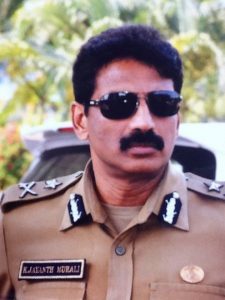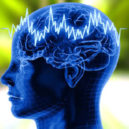Future Prospects of Brain Fingerprinting Analysis

DNA was discovered as the genetic material by Oswald Avery and his associates in 1944 but it took 44 years for it to become admissible as evidence in the courts. Would the brain fingerprinting technology become admissible in our courts or would it be junked as a junk science? Only time will be able to answer this question. It took years of struggle to get DNA evidence admitted as expert evidence in the courts worldwide, a similar tortuous route appears to await, the admission of brain fingerprinting results as evidence. But I am not so much concerned with its admissibility in courts, what I am concerned with and championing for, is it’s utility as an adjunct, in the police investigation to expedite the investigative process in a few complicated cases.
In 2001, brain fingerprinting was ruled as admissible in the USA, in Harrington vs the State of Iowa case. This case remains the only US case in which Dr Farwell’s forensics brain wave analysis (FBA)technology has been admitted formally as evidence and considered. India was the first country to convict an accused relying on evidence provided by brain fingerprinting device and the second country after the United States to introduce brain fingerprinting for detection of crimes. Experts in psychology and neuroscience were uniformly troubled that a criminal conviction was granted even before the method could be validated by an independent body. In 2010 the Indian Supreme Court struck it down and declared evidence from a brain scanner as not admissible. In Selvi & Others vs the State of Karnataka, the Supreme Court held that the application of the BEOS system violated a number of fundamental rights in the Indian Constitution, in particular, the right against self-incrimination, and could only be used with the suspect’s or defendant’s express, informed consent. This decision also became applicable to the use of polygraphs and narco-analysis in the Indian criminal justice system. It, therefore, appears that there are a number of significant scientific and legal hurdles that will have to be overcome for the BEOS system to become accepted as a forensic procedure in the Indian legal criminal justice system. Although this technology has immense potential, there appears to be general reluctance to admit new technology as expert evidence, over the fears of evidence becoming unreliable in future which could jeopardise the adjudicator’s careers as well as cause them whopping personal humiliation.
But all hope is not lost. A ray of light has emerged from pilot studies on forensic brain wave analysis (FBA) conducted by New Zealand Law Foundation from March 2016 to 2017 which had the primary objective of investigating, at a prima facie level, the reliability of Dr Lawrence Farwell’s forensic brainwave analysis technology, and the legal implications of the potential application of this technology in New Zealand. At the end of the pilot phase, the FBA Project Team was satisfied that the science on which forensic brainwave analysis (FBA) technology is based provided sufficient confidence for further experiments and testing. That day, therefore, does not appear far off, when forensic brain wave analysis would receive the same validation that DNA technology has been able to achieve until now.
In November 2015, the Raksha Shakthi University (RSU ) Ahmedabad become the first institute in India to acquire the brain fingerprinting technology in collaboration with US firm called Brainwave Science. In 2016, CBI approached RSU, Ahmedabad to solve a case of rape in the toilet of a running train where a teacher was reportedly raped by a suspect named Amar in Mumbai. Kerala high court in another case ordered brain fingerprinting test to solve the case of the disappearance of a woman in Dubai. In the former, the complicity of Amar in the rape was confirmed during brainwave analysis, while in the latter the suspect committed suicide before the test could be administered. A number of high profile suspects and criminals, from extradited gangster Abu Salem to stamp scamster Abdul Karim Telgi we’re also administered the tests in Bangalore. This non-verbal interrogation method was also applied to the three suspects of the Bihar midday meal poisoning case, in which several children had died
This technique could prove valuable in solving the complicated cases being reported today and in future. Indian police recently arrested left-wing activists for suspected links to banned Maoist rebels, across five states in connection with an alleged plot by the Maoist extremists to assassinate Prime Minister Narendra Modi. If true, forensic brainwave analysis would help us search out the information concerning the plot from the nooks of their brains. On July 26, this year, the parliament passed the new anti-trafficking bill. Pavan Khurana , Rajan Yadav, Sundari and Shahbin of Nepal, who were arrested on 30th July 2018 by the Varanasi Crime Branch are reported to have trafficked thousands of girls to Middle East countries. Subjecting them to brain fingerprinting could enable police to gain valuable insights into trafficking directly from their brains and this information could be used to dismantle an existing network in its entirety. Similarly, the National Investigation Agency (NIA) in the first week of August this year arrested Habibur Rahman, an alleged handler of hardened Lashkar-e-Taiba terrorist Shaikh Naeem after he was deported from Saudi Arabia. He is believed to have provided shelter, hideouts and funds for terrorists like Naeem on different occasions for carrying out terrorist activities in India on the directions of the LeT commander Amjad Rehan who is based out of Pakistan. Studying his brain waves would help determine if his brain contains specific knowledge of terrorist attacks carried out earlier, besides details of the other members of the organisation, and bomb-making knowledge as well as the internal workings of his terrorist organisation. Such information could prove valuable in helping the police reverse engineer a complete terrorist network, pigeonhole their funding techniques as well as the connections.
Brain fingerprinting has certain limitations. If the investigators have no idea of what took place in the perpetration of a crime, for instance, if a person simply disappears and foul play is suspected, it will not be possible to develop any probe stimulus. Under the circumstances, no brain fingerprinting test can be conducted. Secondly, if the suspect knows everything that the investigators know about the crime then the test will not produce incriminating results. One example being that if the suspect acknowledges the fact of having been present at the scene of the crime as an eye-witness and but not as a perpetrator, in such cases probes cannot be developed and a brain wave test cannot be structured. Thirdly, in an alleged sexual assault or rape, if the victim and the suspect agree on the details of the place and events but disagree on the intent of the parties, then the test will be inconclusive as brain fingerprinting detects only information and not the intent.
In spite of some shortcomings, forensic brainwave analysis technology appears to have the ability to make a significant contribution to the administration of justice, in both civil and criminal settings. However, the fundamental and applied authenticity of FBA technology will first have to be unequivocally established, with all relevant legal rights, and protections put in place.
Source from: epaper/deccanchronicle/chennai/dt:10.09.2018
 Dr.K. Jayanth Murali is an IPS Officer belonging to 1991 batch. He is borne on Tamil Nadu cadre. He lives with his family in Chennai, India. He is currently serving the Government of Tamil Nadu as Additional Director General of Police, DVAC.
Dr.K. Jayanth Murali is an IPS Officer belonging to 1991 batch. He is borne on Tamil Nadu cadre. He lives with his family in Chennai, India. He is currently serving the Government of Tamil Nadu as Additional Director General of Police, DVAC.


